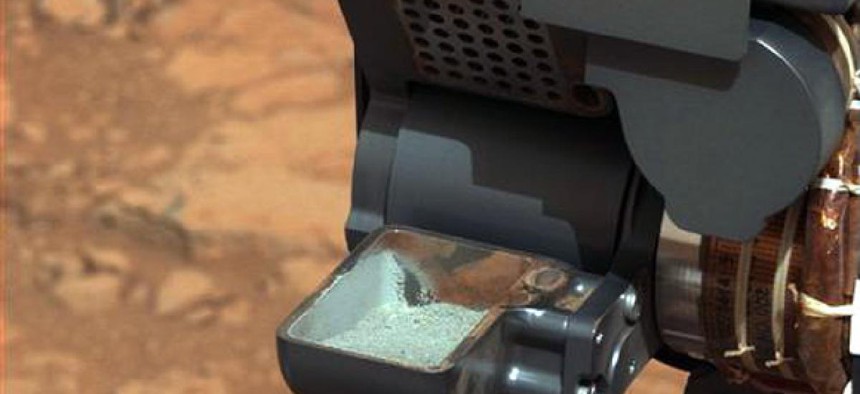There Could Have Been Life on Mars

The Curiosity rover holding a scoop of powdered rock on Mars. The rover recently drilled into a Martian rock for the first time and transferred a pinch of powder to its instruments to analyze the chemical makeup. NASA/AP
NASA's Mars Curiosity rover drilled into a rock and found that it contained a clay-like material.
NASA's Mars Curiosity rover drilled into a rock and found that it contained a clay-like material. That's the news. The implication is much larger: Mars may once have had an environment hospitable to life.
One of the tricky aspects of science is that its revelations tend to be more exciting the more attention you pay to science. For those who are generally disinterested in science, there's a high bar for an exciting announcement; for scientists, a graph showing just the right data point can be validation of a life of effort. The job of organizations like NASA is bridging the two groups, presenting the small, important discoveries of its scientists into something that thrills the world.
The small important discovery announced today is that the Mars rover, Curiosity, analyzed the component elements of dust from a rock that lies in what may once have been a stream bed. It found a variety of common elements you'd find on Earth — oxygen, hydrogen, sulfur, etc. — what NASA calls "some of the key chemical ingredients for life." NASA's press release quotes the project's lead scientist: "A fundamental question for this mission is whether Mars could have supported a habitable environment. From what we know now, the answer is yes." It doesn't currently, mind you. But it could have. "This ancient wet environment, unlike some others on Mars," NASA notes, "was not harshly oxidizing, acidic or extremely salty."
NEXT STORY: Bipartisan Bill Aims to Beef Up FOIA Compliance






